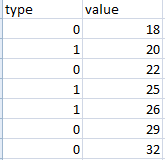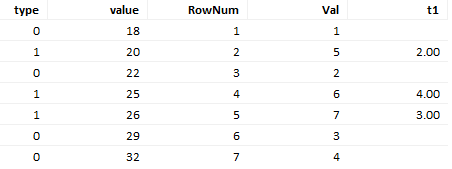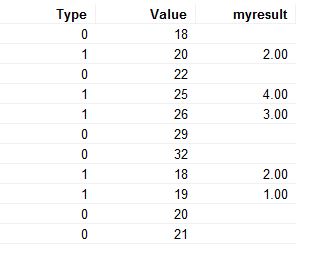I have a problem about the difference calculation for the rows using calculated column in Spotfire.
I am wondering if it is possible to create a calculated column that will count the difference between the current row with the next row which have different attribute. A sample table could be like this:
the result could be like this:
the basic row is:
- When type=1, then calculate the difference between its current value and its next nearest row which type=0, then add the result to a new calculated column.
- btw, the VALUE is always increase :)
- for example, for the first result 2, current value is 20, next row is the nearest type with 0, and the value of next row is 22, then the result is 2
- but for the next type=1, the current value is 25, and its nearest type=0 is on the sixth row, so the result could be 29-25=4
my method which i have tried:
- i added a new RowID column
then try the code:
if([type]=1),[value] - Sum([value]) OVER (PreviousPeriod([RowID])),null)
but it just show the difference between type 1, no type 1 and type 0 :(
Any help or suggestion would be greatly appreciated:)
thanks!




